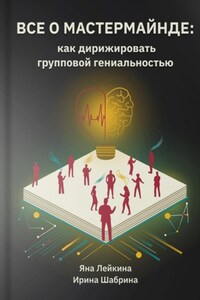The Upside of Irrationality
The Unexpected Benefits of Defying Logic at Work and at Home
International Bestselling author
Copyright
HarperCollinsPublishers
1 London Bridge Street London SE1 9GF www.harpercollins.co.uk
First published by HarperCollinsPublishers 2010
© Dan Ariely 2010
Dan Ariely asserts the moral right to be identified as the author of this work
A catalogue record of this book is available from the British Library
All rights reserved under International and Pan-American Copyright Conventions. By payment of the required fees, you have been granted the non-exclusive, non-transferable right to access and read the text of this e-book on screen. No part of this text may be reproduced, transmitted, downloaded, decompiled, reverse engineered, or stored in or introduced into any information storage and retrieval system, in any form or by any means, whether electronic or mechanical, now known or hereinafter invented, without the express written permission of HarperCollins e-books.
Ebook Edition © MAY 2010 ISBN: 9780007354795
Version 2016-11-25
Find out more about Harpercollins and the environment at www.harpercollins.co.uk/green
To my teachers, collaborators, and students, for making research fun and exciting.
And to all the participants who took part in our experiments over the years—you are the engine of this research, and I am deeply grateful for all your help.
INTRODUCTION Lessons from Procrastination and Medical Side Effects
I don’t know about you, but I have never met anyone who never procrastinates. Delaying annoying tasks is a nearly universal problem—one that is incredibly hard to curb, no matter how hard we try to exert our willpower and self-control or how many times we resolve to reform.
Allow me to share a personal story about one way I learned to deal with my own tendency to procrastinate. Many years ago I experienced a devastating accident. A large magnesium flare exploded next to me and left 70 percent of my body covered with third-degree burns (an experience I wrote about in Predictably Irrational>*). As if to add insult to injury, I acquired hepatitis from an infected blood transfusion after three weeks in the hospital. Obviously, there is never a good time to get a virulent liver disease, but the timing of its onset was particularly unfortunate because I was already in such bad shape. The disease increased the risk of complications, delayed my treatment, and caused my body to reject many skin transplants. To make matters worse, the doctors didn’t know what type of liver disease I had. They knew I wasn’t suffering from hepatitis A or B, but they couldn’t identify the strain. After a while the illness subsided, but it still slowed my recovery by flaring up from time to time and wreaking havoc on my system.
Eight years later, when I was in graduate school, a flare-up hit me hard. I checked into the student health center, and after many blood tests the doctor gave me a diagnosis: it was hepatitis C, which had recently been isolated and identified. As lousy as I felt, I greeted this as good news. First, I finally knew what I had; second, a promising new experimental drug called interferon looked as if it might be an effective treatment for hepatitis C. The doctor asked whether I’d consider being part of an experimental study to test the efficacy of interferon. Given the threats of liver fibrosis and cirrhosis and the possibility of early death, it seemed that being part of the study was clearly the preferred path.
The initial protocol called for self-injections of interferon three times a week. The doctors told me that after each injection I would experience flulike symptoms including fever, nausea, headaches, and vomiting—warnings that I soon discovered to be perfectly accurate. But I was determined to kick the disease, so every Monday, Wednesday, and Friday evening over the next year and a half, I carried out the following ritual: Once I got home, I would take a needle from the medicine cabinet, open the refrigerator, load the syringe with the right dosage of interferon, plunge the needle deep into my thigh, and inject the medication. Then I would lie down in a big hammock—the only interesting piece of furniture in my loftlike student apartment—from which I had a perfect view of the television. I kept a bucket within reach to catch the vomit that would inevitably come and a blanket to fend off the shivering. About an hour later the nausea, shivering, and headache would set in, and at some point I would fall asleep. By noon the next day I would have more or less recovered and would return to my classwork and research.














